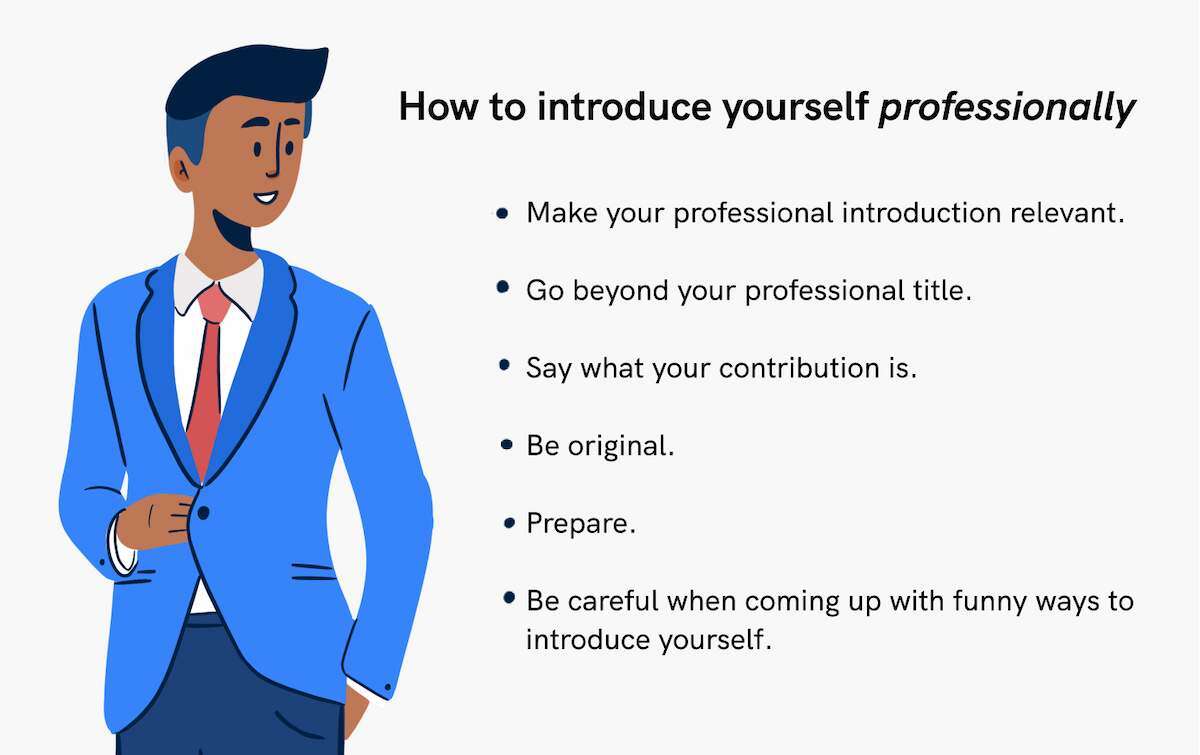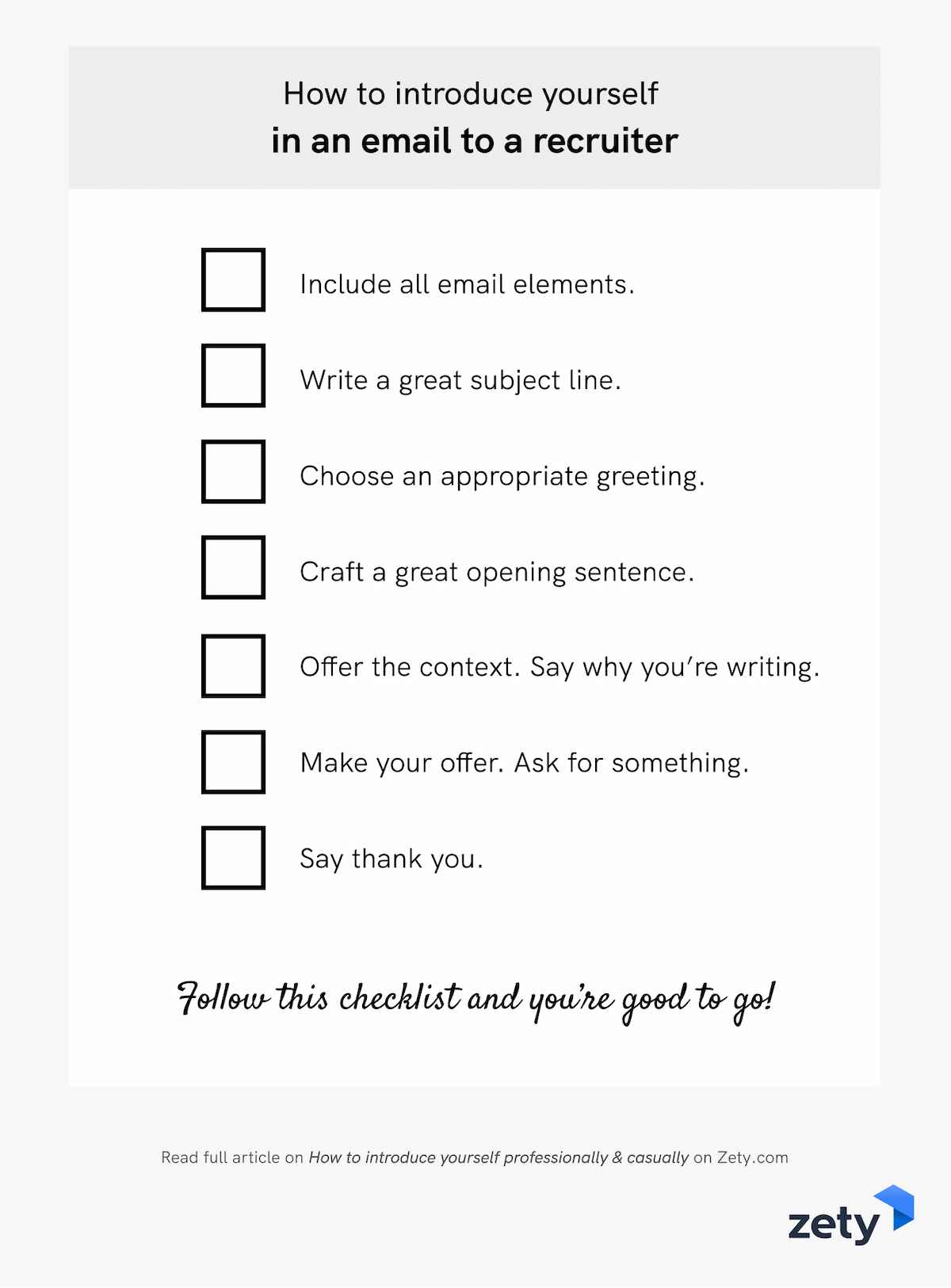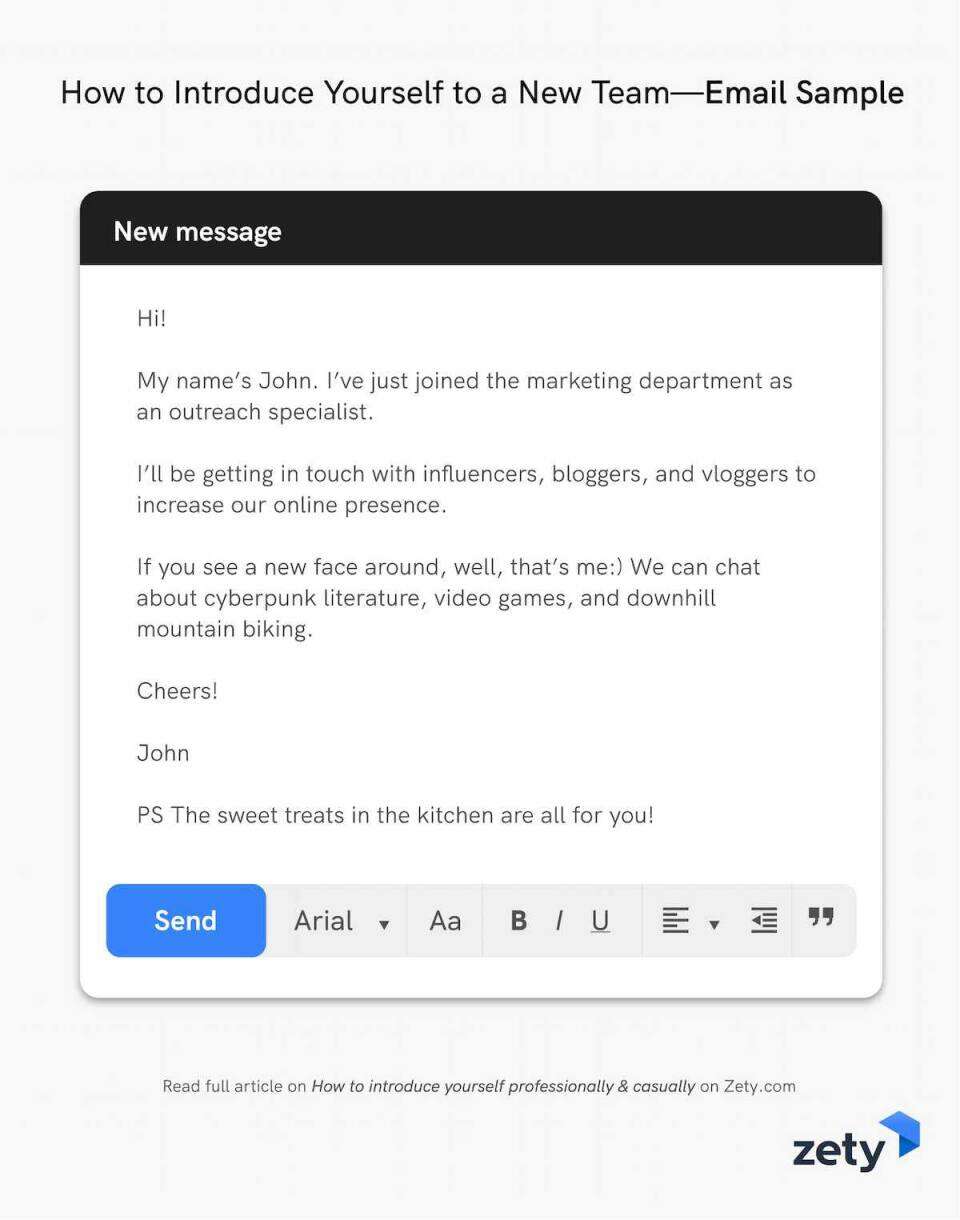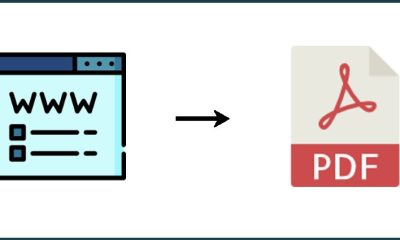Career Tips
Easy Ways To Introduce Yourself Professionally And Casually

Say hello. Say your name. Scratch your head. And hope that someone else will take it from there. Let’s be honest: This is not the way you want to introduce yourself. That is why you are here.
Professional Introduction—Example
GOOD
My name is Maciek, and I’m a career writer. My job is to provide job seekers with expert advice on career-related topics. I read a lot and consult recruiting professionals so you don’t have to. I show you how to hack the recruitment process, create a job-winning resume, ace the job interview, and… introduce yourself, among others.
Better, right?
Now
When you come to think of it, the first self-introduction wouldn’t have sucked that much in a meeting of Italian cuisine chefs.
In fact, it might’ve been a good one.
But not in the context of this article. Such a professional introduction doesn’t make sense, and it’s not useful in the least.
Remember:
Relevance is key when you introduce yourself. In a speech, writing, to a group, or in any other context.
So, in a professional context, follow the below steps:
How to Introduce Yourself Professionally—Dos and Don’ts
1. Make your professional introduction relevant.
You may be a pizza lover, but unless you’re a chef or taking part in a culinary workshop, it will feel cute random. Be mindful of the context.
2. Go beyond your professional title.
The truth is, job titles don’t mean much. Sorry. The best way to introduce yourself is to explain what your job is really about.
3. Say what your contribution is.
This ties in nicely with the previous point. But it’s just so important it deserves a separate point. Your professional introduction should tell the audience about your contribution to their (professional) lives. What problems do you help them solve?
4. Be original
It doesn’t mean that if you’re a writer you need to prepare a self-intro essay. No. Just take an extra step and say something more about the nature of your job. Plus, the way you deliver your professional introduction matters. You know, a friendly smile works magic.
5. Prepare.
No ideas on how to make a great introduction? Take a step back and ask yourself what you want to be known for.
6. Mind the cultural context.
If you’re introducing yourself to an international audience, make sure not to offend anybody.
7. Be careful when coming up with funny ways to introduce yourself.
Humor is great, but avoid cracking jokes for the sake of cracking jokes. What you consider funny may not resonate with your speaker.
One more thing.
Sometimes, it may be very hard to say anything more than your typical “I’m a project manager,” “I’m a teacher,” “I’m a scientist.” It’s especially true when you’ve been doing your thing for a long time.
That’s where your friends and family come in.
Just ask them to help you figure out what your real contribution is.

Here’s the thing.
A good job interview introduction is essentially the same as answering the “tell me about yourself” question
In fact
We have a special guide on how to answer the “tell me about yourself” inquiry, so let’s start with the basics here.
To Introduce Yourself in a Job Interview:
1. Mind the context.
It’s a bit of a no-brainer. The context is your job interview, and introducing yourself means giving the best answer to “tell me about yourself” question.
2. Do your research.
To introduce yourself in the best possible way, find out as much as you can about the company you’re applying to. Make sure you’re a cultural fit. And learn how to answer them what are you passionate about question.
3. Control your body language.
Body language communicates much more than you think. When you introduce yourself to the recruiter:
- Look them in the eye.
- Make sure your handshake is firm but natural to signal trust.
- Speak with confidence.
- Do not fidget, roll up your eyes, or cross your arms.
4. Prepare your answer.
Come in prepared to deliver the best interview introduction. That’s it. Rehearse what you want to say to minimize the chances of being taken by surprise.
How to Introduce Yourself in an Email to a Recruiter—Checklist
1. Include all email elements.
This may seem obvious, but double-check if your message starts with a subject line and ends with your name. Your “introduce yourself” email cannot be incomplete.
2. Write a great subject line.
When you introduce yourself via email the last thing you want is to land in a spam folder. Come up with a strong subject line. Stay within the suggested character limit. Avoid spam trigger words. If you’re replying to a job offer, make sure you use the right subject format.
3. Choose an appropriate greeting.
“Dear Sir or Madam” appears to be a lazy introduction in an email. It indicates that you do not know who you are writing to. Make every attempt to recognize your Dear Sir or Madam by name.
4. Craft a great opening sentence.
It sets the tone for everything you want to include in your self-introductory email.
5. Offer the context. Say why you’re writing.
Relevance is key. A message that doesn’t resonate with the recipient will go straight to the trash folder. You don’t want your introduction email to a recruiter to go there.
6. Make your offer. Ask for something.
Show the hiring manager how they will benefit from hiring you, and ask for an interview. This is the most important part of your entire professional introduction.
7. Say thank you.
Ending your self-introductory email with gratitude can boost your chances of getting a reply

New Employee Self-Introduction Email
A successful introductory email to a recruiter is not the end of story.
Because
You’re likely to come across other situations when you’ll have to introduce yourself via email or in writing.
Look at these typical challenging tasks of a new employee:
- Send an introduction email to the new team
- Write an introduction paragraph about yourself for the newsletter
- Prepare an “about me” paragraph for the website
Plus
You’re not the first person tasked with this.
Ask your teammates to show you their “about me” sample text. This will give you a first-hand insight into the length, structure, and tone expected of you.
If you have no reference point for your new employee self-introduction email, paragraph, or blurb—
Imagine you’re talking to a real person. Write down the introduction paragraph about yourself just the way you would normally introduce yourself professionally.
How to Introduce Yourself to a New Team—Email Sample
Hi!
My name’s John. I’ve just joined the marketing department as an outreach specialist.
I’ll be getting in touch with influencers, bloggers, and vloggers to increase our online presence.
If you see a new face around, well, that’s me:) We can chat about cyberpunk literature, video games, and downhill mountain biking.
Cheers!
John
PS The sweet treats in the kitchen are all for you!
Remember:
Before you write such an introduction about yourself, ask your colleagues to show you how they did it when they joined the team.
And
When you finally get down to writing, imagine you’re talking to someone, and let your intro flow as naturally as possible.

The Best Way to Introduce Yourself—Works in Any Setting
1. Be mindful of the social context.
Yes, I’m being repetitive. But this is the single most important thing: make your self-introduction relevant.
2. Don’t say too much.
Oversharing irrelevant information will work against you. If you’re attending a children’s party, make being a parent the focal point of your introduction. You may be the president of a large corporation, yet it makes little sense to mention this while introducing oneself.
3. Acknowledge the presence of others.
The finest introduction emphasizes what you share in common with the others. You’ll see how much easy it is for everyone to build connection.
4. Listen and be present.
Listening to others is an excellent interpersonal skill. Starting up a conversation is not the same as introducing yourself, but it is the following step after all introductions have been made. Great talks can only happen when individuals listen to one another and stay present in the moment.
If you want to introduce yourself in a professional manner remember to be mindful of the social context. In other words, make sure your introduction fits the situation. Plus, be aware of why you’re introducing yourself in the first place, and what you want others to learn about you.
Frequently Asked Questions about Introducing Yourself
How to introduce yourself professionally?
Here are a few rules for making a good self-introduction in a business setting:
- Start with a greeting and say your name.
- State your job title and specify what’s your area of expertise.
- Say a few words about your relevant work experience and professional achievements.
- Mention your professional goals.
- Ask the other person a question to make a connection.
How to introduce yourself in an email?
When introducing yourself in an email, always explain why you’re writing and the relationship between you and the recipient. Then, briefly describe your business background, such as your employment history or area of specialty. If you’re introducing yourself to a job recruiter, use a professional tone; however, if you’re writing to new coworkers, try with a more informal tone.
Here are two email introduction examples:
Introducing Yourself in an Email—Formal Message Example
My name is [Name] and I’m the new [position] at [name of the company]. I’d like to take this opportunity to introduce myself and say how thrilled I am to work with all of you. I’d appreciate a chance to meet all the team members in person, so how about scheduling a meeting this week?
How to Introduce Yourself in an Email—Informal Message Example
My name is [Name], I’m the new [job title] at [the company or department name]. I just wanted to say how excited I am about joining your company and how I’m looking forward to working with you. It might take some time before I get to know everyone, so if you see me frantically searching for coffee in the break room, don’t hesitate to say hi!
Best,
[Name]
How to introduce yourself in an interview?
Talking about yourself during a job interview can be stressful, so it’s a good practice to prepare a short self-introduction beforehand.
Here’s what your professional introduction should include:
- Your personal information: name, job title, and professional background
- A brief overview of your work experience or education
- What your current job is and what your professional responsibilities include
- A recent work or educational achievement you’re proud of
- An explanation of why you applied for the job and what you can contribute to the company
How to introduce yourself to a new team at work?
Here are some tips to help you introduce yourself to a new team:
- Prepare a short introduction beforehand so you’re ready right away.
- Adjust your tone to the company culture—notice if it’s formal or laid back.
- Use the onboarding process to meet new colleagues and ask them questions.
- Go for lunch or coffee with your team to get to know them in a more relaxed setting.
- Send an introduction email with a short professional summary.
- Ask HR for other means of introduction, so you can connect with people from other teams.
- Use positive language to make a good impression.
- Steer away from sharing information that could be inappropriate for a work setting.












